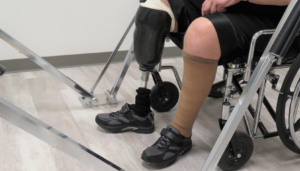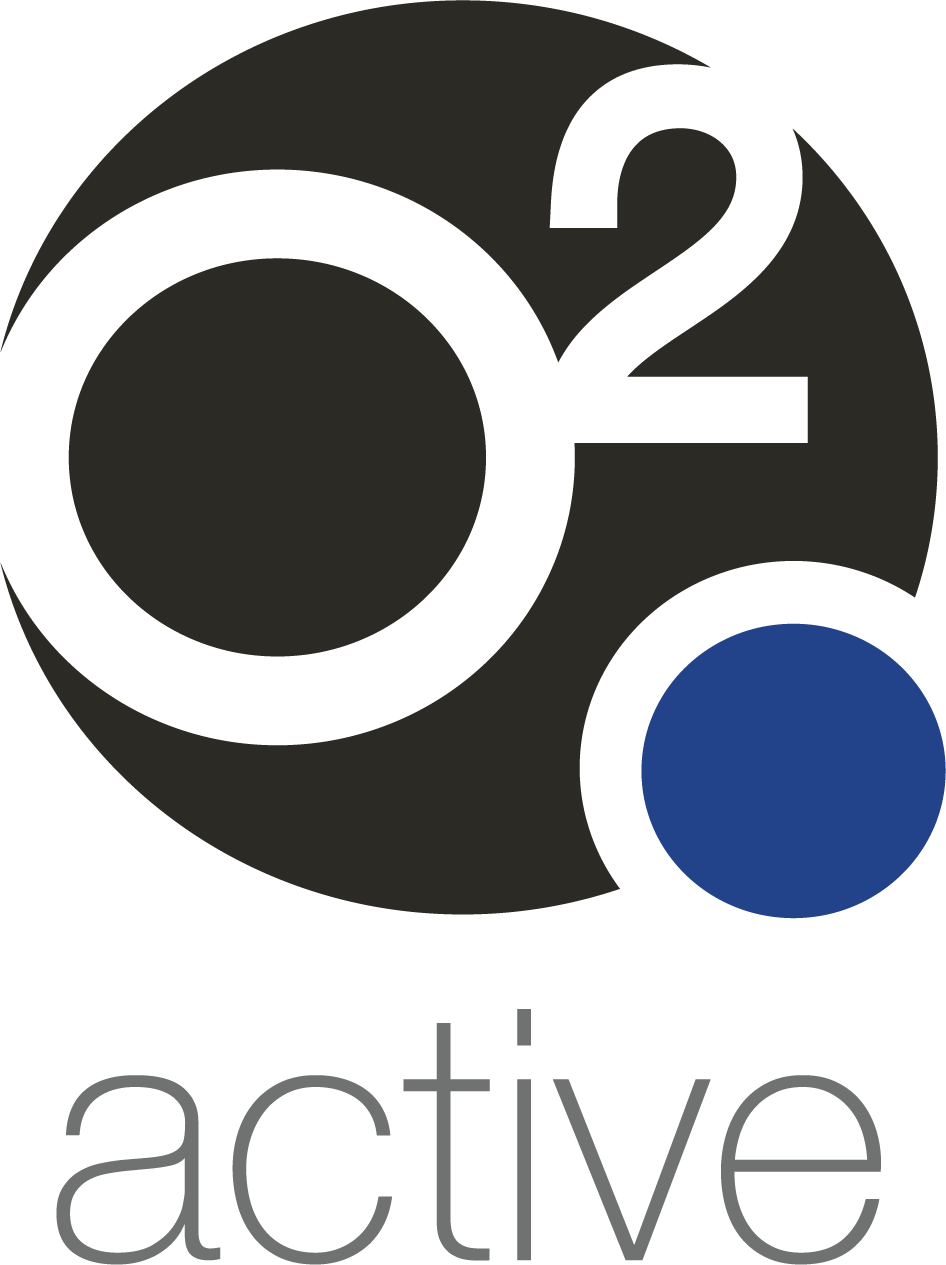
By Tim Wallace and Kalypso McCallum Smith (UWA Clinical Exercise Physiology Masters Prac Students)
Going through the process of amputations can be quite daunting, whether it’s from the causation of trauma, a surgical intervention or a disease. In 2009-2010 in Australia, 8000 lower limb amputation surgeries were conducted and are seen to be one of the leading causes of permanent disability.4 However, although this is quite alarming throughout the process, working with a team of qualified professionals for a good support system will aid you in navigating your new lifestyle. You may be anxious about undergoing the procedure but with the help of your doctor, occupational therapist, physiotherapist, prosthetist and an exercise physiologist, physical and psychological rehabilitation as well as education will all be addressed to ensure you regain a high quality of life and independence.
Physical inactivity is one of the greatest complications found with amputee patients and can lead to longer rehab times, worsening of comorbid conditions or further disability.4 The largest comorbid condition resulting in amputation is diabetes, with 4,400 amputations occurring every year, which is 12 people a day.1 So, when it comes to being physically inactive post-amputation, the most at risk group of further sedentary behaviours are those who have undergone the most recent operation. However, it is during those weeks and months when sedentary behaviours are adapted that are the most crucial for rehabilitation and readjustment, which will then also further allow the individual’s transition to life with being an amputee easier. Therefore, through the guidance of your exercise physiologist, individualised programs and interventions should be established to ensure this seamless transition post-surgery; and if you’re able to, pre-rehabilitation strategies and physically active behaviours should be adopted to reduce your risk and need for amputations due to conditions or disease.1
TYPES OF AMPUTEES
Amputations occur from a wide variety of causes which can lead to different levels of severity and resulting disabilities. The two causes of amputation are classified as traumatic and atraumatic. Traumatic injuries include events such as motor vehicle accidents which affect predominantly younger populations and atraumatic which is broken into two subgroups of surgical and disease.
Some diseases that cause amputations include peripheral vascular disease, diabetes, or infections such as osteomyelitis. And surgical interventions such as for the removal of tumours from bones or muscle.
Amputations because of atraumatic causes affect older populations and predominantly those who were already leading a sedentary life due to the accumulation of various risk factors progressing over years.4
Although all types of amputations result in the same outcomes (surgically removed body part) the factors that cause the need for amputations play a huge role in what therapies and medical team the patient then requires. This is when it’s vital to not only just recognise the focus placed on the pathology of the amputation but also the holistic biopsychosocial picture of the patient- physical, mental and social wellbeing and incorporation of them back into everyday life.
When producing a rehabilitation program for the individual, it is dependent on where the site of amputation is located on the body as this will significantly change how it affects the individual and what adjustments are needed for specific therapies and exercise interventions to optimise their capacity to return to a high health-related quality of life.3
If your amputation occurs in a lower limb, prioritising good gait patterns and strength development in the legs and trunk muscles to assist with walking. Due to these altered movement patterns in gait, further atrophy to the muscle occurs at the site of amputation. Hence, retraining gait and regaining strength with supervision of an exercise physiologist is vital to allow for reduced metabolic cost (energy used) when completing the task, resulting in less fatigue.2 With this reduced fatigue, exercise therapy to these areas will further support your ability to do everyday activities, help to prevent injuries, progressions of other conditions and ultimately allow more independence.
Upper limb amputees (whether using a prosthesis or not) need to take care of their neck, upper back, and shoulder areas to prevent long-term pain and management of the condition. The flexibility of the neck and upper back, along with neck and shoulder-blade control exercises, such as rows, lateral raises or simply through active range of motion will be very important for long term conditioning.3
In a study following amputees exercise participation post-surgery, it was found that most amputees (61%) did not achieve sufficient physical activity during the week and 33% are considered completely sedentary. Being sufficiently active has a huge amount of different health benefits both mental and physical as well as being imperative for recent amputees’ recovery and reclaiming a high quality of life.4
EXERCISE GUIDELINES
Therefore, the exercise guidelines in regards to the amount of exercise is no different to someone of the general population; with the ideal amount of activity being a minimum of 210 minutes of moderate exercise a week, with no more than two consecutive days of rest.4 These sessions should have a focus on improving balance, trunk strength, weight, pain management and self-confidence.
Training to improve balance is important primarily for patients with unilateral lower-limb amputations and should be completed at least twice a week for 30 minutes.5 These sessions should focus on a combination of static and dynamic balance with exercises such as standing on a balance board, single-leg stance and functional reach exercises.
Pain management training is imperative as individuals post-amputation tend to experience a lot of referred pain from adjusting their movement patterns to compensate for the limb loss.5 For the best strength improvements 3 sets of 8-12 reps making sure that they are always working as close to failure as possible (should be fatigued but stop 2 reps before failure).6 The prescription of resistance training programs are advised to focus on strengthening the trunk, hips and abdominals for lower limb amputations and targeting the muscles around the neck, shoulder blades and upper back for upper limb amputees, with supervision in the first few weeks-months of programming for the successful acquisition of exercise techniques. Once adequate muscular strength has been regained and gait patterns are able to perform rhythmical gross movements competently such as walking or swimming, aerobic sessions can be further introduced to aid weight loss management of other exacerbating co-morbidities and also allow feeding back into the public, social group classes.6
Overall, the need to stay active is vital in short term and long-term success for amputees regardless of the site of limb loss. Completing individualised client-focused exercise programs conducted with supervision and guidance from your team of medical professionals will ensure that you achieve the best recovery for yourself and allow the adjustment back to everyday life and independence seamlessly.
References
- Amputation. (2020). Retrieved 4 September 2020, from https://www.healthdirect.gov.au/amputation
- Clinical Guidelines: Amputees. (2020). Retrieved 4 September 2020, from https://physio-pedia.com/Clinical_Guidelines:_Amputees?utm_source=physiopedia&utm_medium=related_articles&utm_campaign=ongoing_internal
- Esquenazi,, & DiGiacomo, R. (2001). Rehabilitation After Amputation. Journal Of The American Podiatric Medical Association, 91(1), 13-22. doi: 10.7547/87507315-91-1-13
- Langford, J., Dillon, M., Granger, C., & Barr, C. (2018). Physical activity participation amongst individuals with lower limb amputation. Disability And Rehabilitation, 41(9),1063-1070. doi:10.1080/09638288.2017.1422031 (2020). Retrieved 4 September 2020, from https://www.limbs4life.org.au/resources
- Wasser, J., Herman, D., Horodyski, M., Zaremski, J., Tripp, B., & Page, P. et al. (2017). Exercise intervention for unilateral amputees with low back pain: study protocol for a randomised, controlled trial. Trials, 18(1). doi: 10.1186/s13063-017-2362-0
Wolff-Burke, M., & Cole, E. (2020). Advanced Exercises for People With Lower-Extremity Amputations – Amputee Coalition. Retrieved 4 September 2020, from https://www.amputee-coalition.org/resources/advanced-exercises
